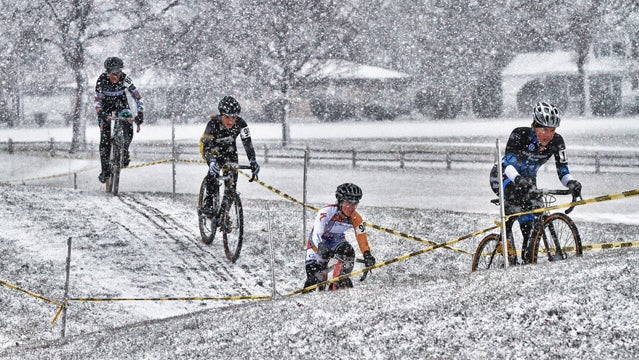Even the most experienced racers can be caught unawares by the weather. But in an emergency, the pros can DNF and hop into the team car. That’s not an option for the weekend warrior—you have to ride home.
To help keep hypothermia and heat stroke at bay, we recruited professional cyclist (fresh from a very cold, very wet Tour of Flanders ), USA National Team member , and former pro to share their dressing secrets.
Below Freezing
33 to 45 Degrees
33 to 45 Degrees With Rain
46 to 60 Degrees
61 to 75 Degrees
76 Degrees and Hotter
Clothing for Cyclists: Below Freezing
Ted King, Alison Tetrick, and Andy Jacques-Maynes share their favorite clothing for all types of weather, from freezing to sizzling.

Most recreational riders are sane enough to ride indoors at these temperatures. That said, many road riders are masochistic beasts who simply have to train—and race—in miserable conditions.
Take King. The professional cyclist recently returned from Europe, which is just thawing out after one of the iciest springs in its history. King raced the Tour of Flanders on a day with record-breaking cold temperatures.
“Frigid-weather gear means as much Gore-Tex, windproof, and thermal clothing as you can afford,” King says. “Function over fashion here. You’ll likely look like a bloated oaf with all this gear, but it’s better than hypothermia and losing a few digits to frostbite.”
Start with the extremities, which tend to go cold first. are a must, as are that pair your fingers together for added warmth. In the coldest of conditions, opt for a set of over your gloves. These rubberized hand-shaped pouches attach to your handlebars, adding another layer of wind-stopping material without compromising your ability to shift.
Cold can do a number on your skin, so King recommends a balaclava facemask like Craft’s . Always wear glasses in cold conditions to keep your eyes from tearing up and to protect the delicate skin in that area.
Your extremities go cold first, but you’ll freeze solid without some core protection. King recommends raiding your ski drawer for a set of long undershirts. Wear a standard set of bibs and leg-warmers on your legs, and cover them with a for added warmth. Top it off with a and you’re good to hit the road. Just remember: If you get cold, pedal faster.
Clothing for Cyclists: 33 to 45 Degrees
Ted King, Alison Tetrick, and Andy Jacques-Maynes share their favorite clothing for all types of weather, from freezing to sizzling.

Alison Tetrick hails from Northern California, where rides can be wet and cold in the winter and where dressing appropriately is just as much part of a training plan as intervals and hill repeats.��
In this zone, the key is walking the line between overheating when you’re working hard and freezing when you’re just spinning. No matter how hot your body runs, Tetrick suggests starting with a long-sleeve jersey for insulation and a —which you can strip off during hard efforts—for wind protection.
To keep your legs from seizing up, opt for a set of or , and tuck both under your shorts to prevent them from slipping off. Keep the transition between foot and ankle warm with a pair of tall wool socks. But resist the urge to splurge on white shoe covers (they’ll only get dirty and ripped-up). Instead, go for a bright color—good for visibility and vanity
Top it off with a pair of and some embrocation—cycling-specific warming oil—underneath your leg warmers, and you’ll be as toasty enough to ride for hours.
Rain adds another degree of complexity to your clothing choices. In case of precipitation, Tetrick suggests you ditch the vest and long-sleeve jersey and instead opt for layering a thermal jacket over a long-sleeve base layer for warmth. Top it all with a shell to keep you dry.
Don’t forget your feet, either: Choose a set of waterproof neoprene covers with a tight neck, and match them with a set of water-resistant tights.
What to Wear in Any Weather: 33 to 45 Degrees With Rain
Ted King, Alison Tetrick, and Andy Jacques-Maynes share their favorite clothing for all types of weather – from freezing to sizzling.
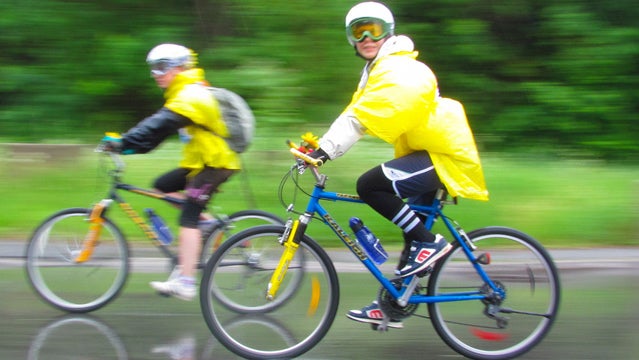
Rain adds another degree of complexity to your clothing choices. If temperatures range from 33 to 45 degrees and it’s dry, you can get away with a long-sleeve jersey and a thermal vest. Throw in precipitation, and you’ll need to don a few extra layers to keep your core warm.��
Tetrick suggests you ditch the vest and long-sleeve jersey and instead opt for layering a thermal jacket overtop a long-sleeve base layer for warmth and wearing a shell like the to keep you dry.
Water has a nasty way of winding up in your shoes, so choose a set of waterproof neoprene covers with a tight neck, and match them with a set of water-resistant tights overtop your leg warmers and bibs.
Even at warmer temperatures, if it’s raining you’re going to want to wear a rain jacket and pack a few extra layers in your jersey pockets. You can’t go wrong with a pair of and a vest.
Clothing for Cyclists: 46 to 60 Degrees
Ted King, Alison Tetrick, and Andy Jacques-Maynes share their favorite clothing for all types of weather, from freezing to sizzling.
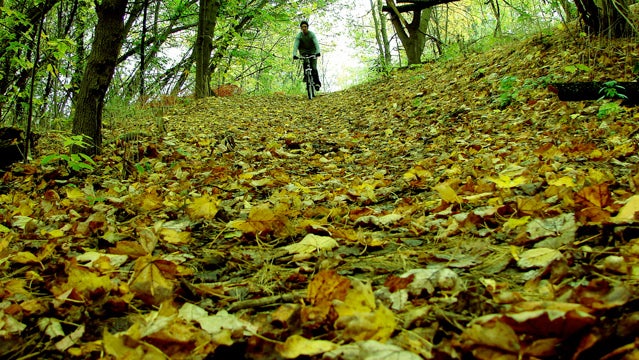
You can finally stow your heavy thermal gear away in the closet at these temperatures, but don’t make the beginner mistake of riding in only a short-sleeved jersey and bibs.
Long-sleeve jerseys work well at the lower end of this spectrum, while short-sleeved jerseys and arm warmers are the recommended option as temperatures near 60 degrees. Whatever the temperature, it’s a good idea to start your ride wearing a vest; if you get too hot, you can simply take it off and stuff it into a pocket. “Vests fit snugly into this category, both the ambiguously titled and the much sturdier ,” says King. For your legs, either knee or leg warmers will work, but you should skip the tights.
You’ll still want , although you can ditch the lobster versions for more form-fitting models. At the lower end of the range, opt for a pair with some wind-stopping properties. As it gets closer to 60 degrees, you can choose an all-fleece model, as long as you make sure the palm has some tacky material to keep your hands from slipping.
Thin shoe covers will be enough to keep your feet warm, but your face still needs some attention: King recommends finishing the ensemble with a multi-purpose .��
Clothing for Cyclists: 61 to 75 Degrees
Ted King, Alison Tetrick, and Andy Jacques-Maynes share their favorite clothing for all types of weather, from freezing to sizzling.
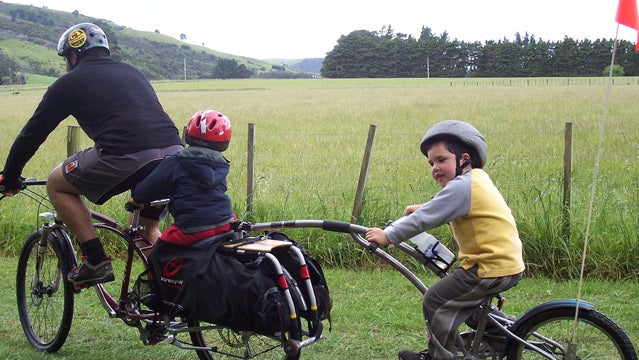
Jacques-Maynes won’t go on a ride without an beneath his jersey unless it’s hotter than 80 degrees outside.
“The undershirt is pretty much always on. If I get a cold patch or slow down, I won’t get a chill—I am usually soaking wet with sweat—if I have an extra layer on,” he says.
In addition to the basic undershirt, jersey and bib shorts, Jacques-Maynes recommends wearing a set of knee warmers at the start of the ride but peeling them off as the day heats up. He also suggests packing a set of arm warmers along in a jersey pocket as an easy extra layer to pull on before a descent or to prevent any sweat-induced chills.
Standard fingerless cycling gloves are also a must. Like a helmet, it’s an important safety measure that can prevent painful road rash to your hands in the case of a crash. And unless it’s raining, never wear a hat under the helmet, says Jacques-Maynes.
“I always snicker at the guys wearing cycling hats—I assume for fashion—when it’s hot and sunny out. It’s just like wearing a raincoat to the beach,” he says.��
Clothing for Cyclists: 76 Degrees and Hotter
Ted King, Alison Tetrick, and Andy Jacques-Maynes share their favorite clothing for all types of weather, from freezing to sizzling.
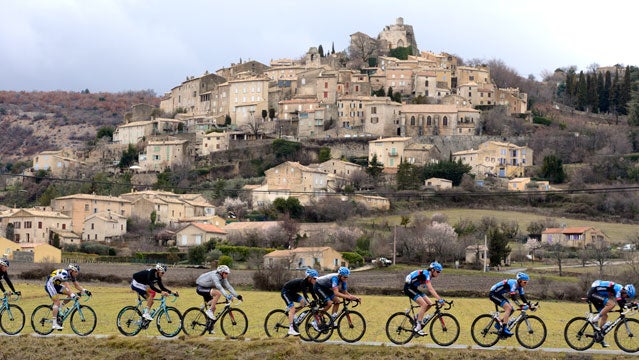
When it’s this warm out, your clothing choices become fairly easy. As King puts it: “Jersey and shorts, duh.”
A set of shades are crucial for UV protection, and to prevent any errant rocks from hitting your eyes. Most importantly, resist the urge to ditch your gloves and socks.��While you won’t find many pro roadies wearing them, Pearl Izumi’s are designed to be cooler than riding with bare arms, and are a good option if you easily burn.
No matter the temperature, a jersey—with sleeves—is another mandatory item.��
“Even when it’s stiflingly hot out and you want to work off your farmer’s tan, you should never ride without a jersey. Rules are rules, my friends,” says King.��Instead, if you tend to overheat try Louis Garneau’s super-.


